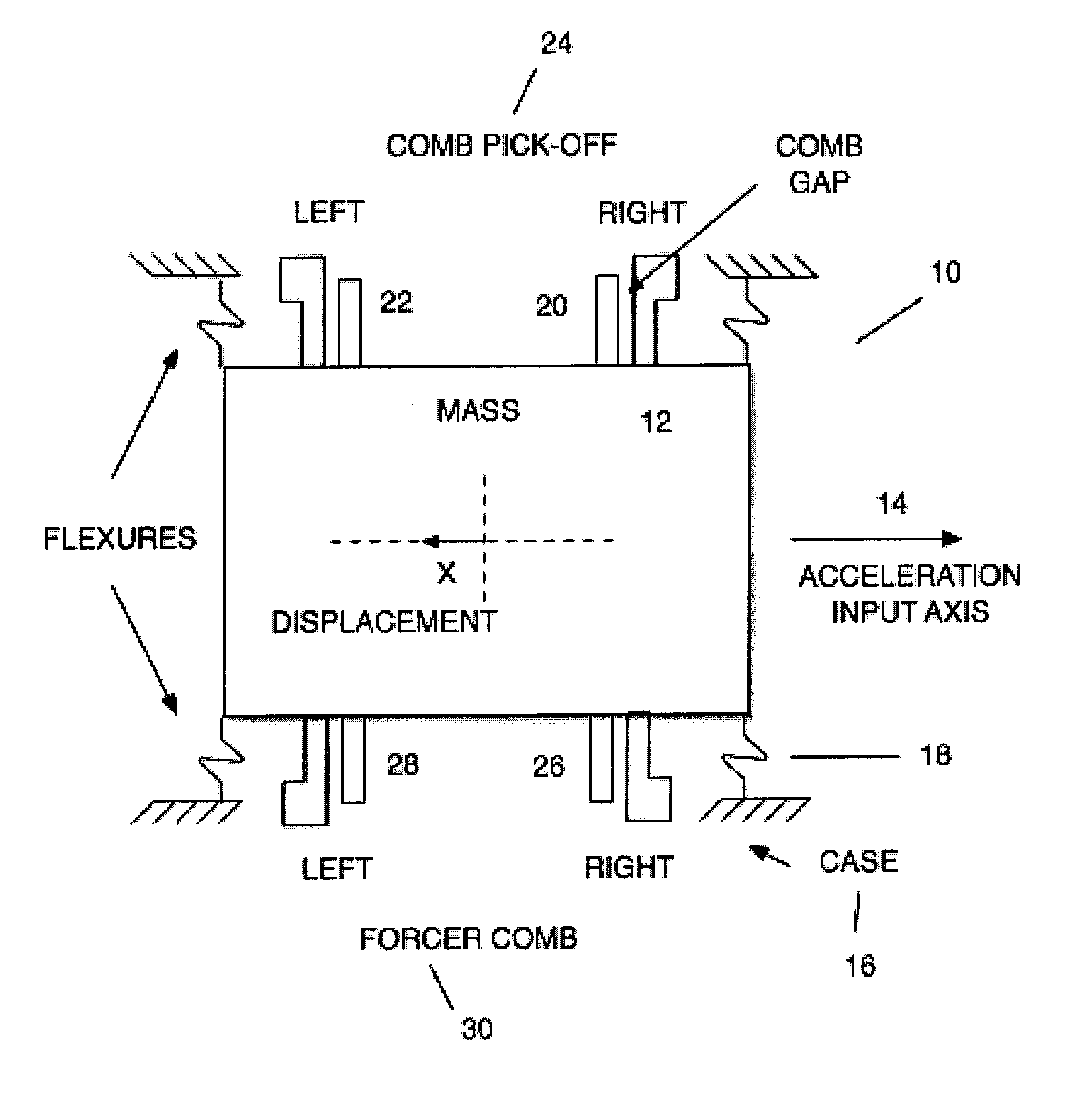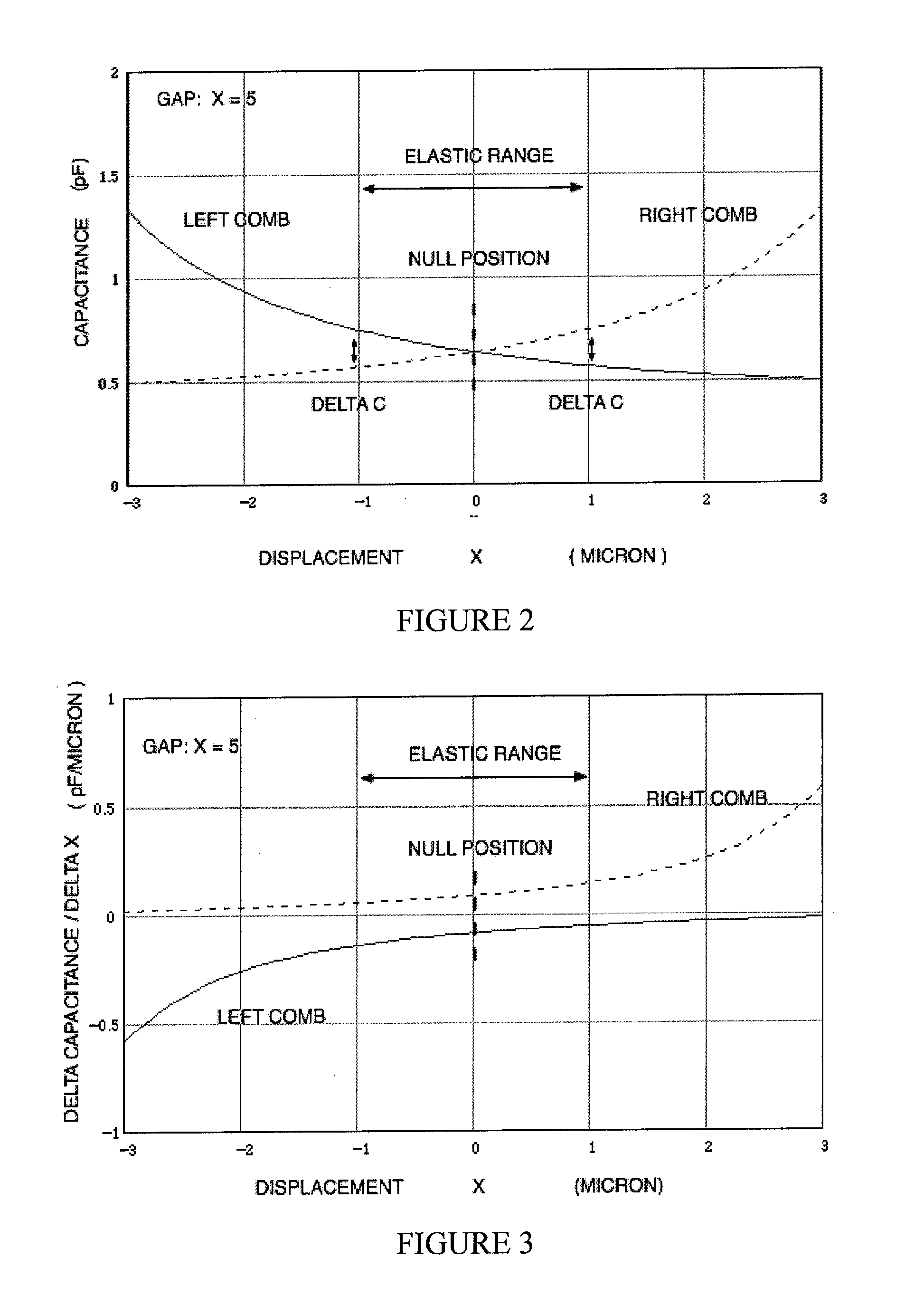Electrical Damping for Isolation and Control of Mems Sensors Experiencing High-G Launch
a technology of electric damping and high-g launch, which is applied in the direction of speed/acceleration/shock measurement, instruments, surveying and navigation, etc., can solve problems such as changing sensor performance, and achieve the effect of dampening the motion of flexurally suspended structures and minimizing sensor displacemen
- Summary
- Abstract
- Description
- Claims
- Application Information
AI Technical Summary
Benefits of technology
Problems solved by technology
Method used
Image
Examples
Embodiment Construction
Introduction
[0032]The invention is described with respect to linear accelerometer and simple Coriolis gyro designs. However, this is not a limitation of the invention as the invention can apply to any MEMS sensor that has one or more flexurally suspended structures that need to be controlled.
Linear Accelerometer
[0033]The conceptual linear accelerometer 10 is shown in FIG. 1; the design of the accelerometer per se is known in the art. It is a spring mass design comprising a mass 12 that is reactive to acceleration along an Acceleration Input Axis 14. The mass, also known as a proof mass, is flexurally attached to a fixed portion of the sensor (in this example, case 16) with four bending flexures 18 that allow displacement, X, of the mass along the Acceleration Input Axis. Note the displacement response is in the opposite direction from the acceleration input direction. A set of comb fingers comprising a Right comb finger pair 20 and a Left comb finger pair 22 makes up the pick-off co...
PUM
 Login to View More
Login to View More Abstract
Description
Claims
Application Information
 Login to View More
Login to View More - R&D
- Intellectual Property
- Life Sciences
- Materials
- Tech Scout
- Unparalleled Data Quality
- Higher Quality Content
- 60% Fewer Hallucinations
Browse by: Latest US Patents, China's latest patents, Technical Efficacy Thesaurus, Application Domain, Technology Topic, Popular Technical Reports.
© 2025 PatSnap. All rights reserved.Legal|Privacy policy|Modern Slavery Act Transparency Statement|Sitemap|About US| Contact US: help@patsnap.com



